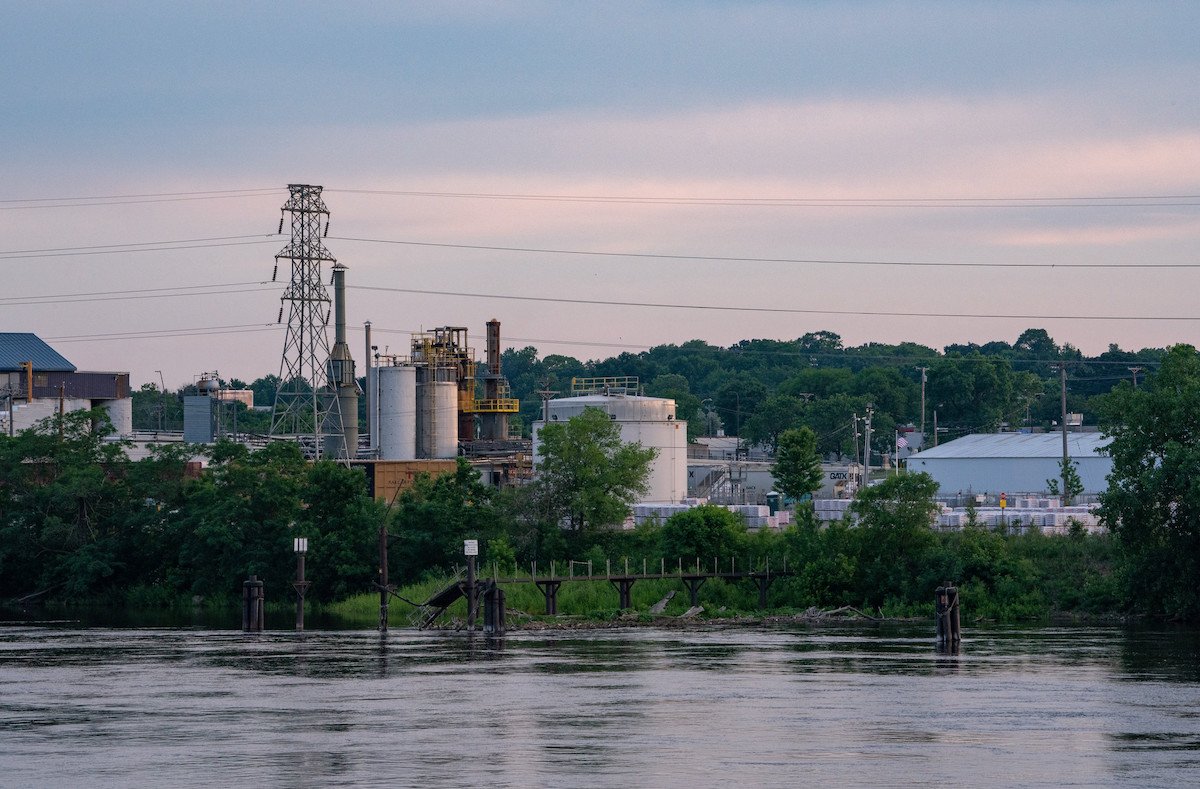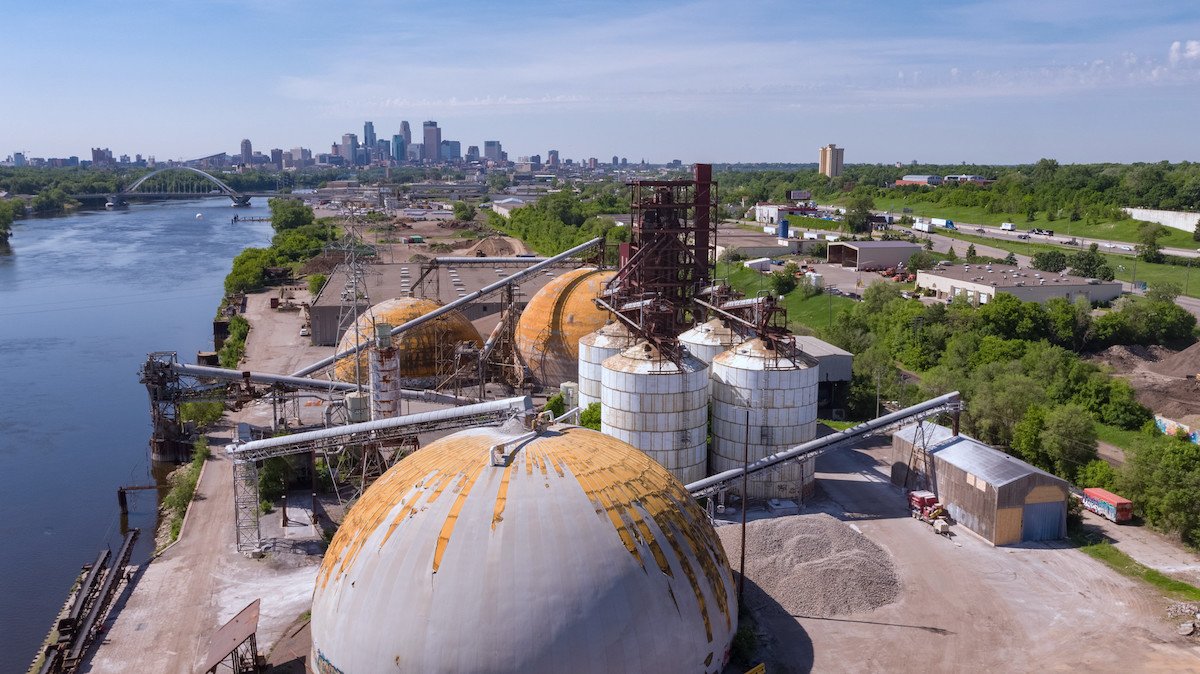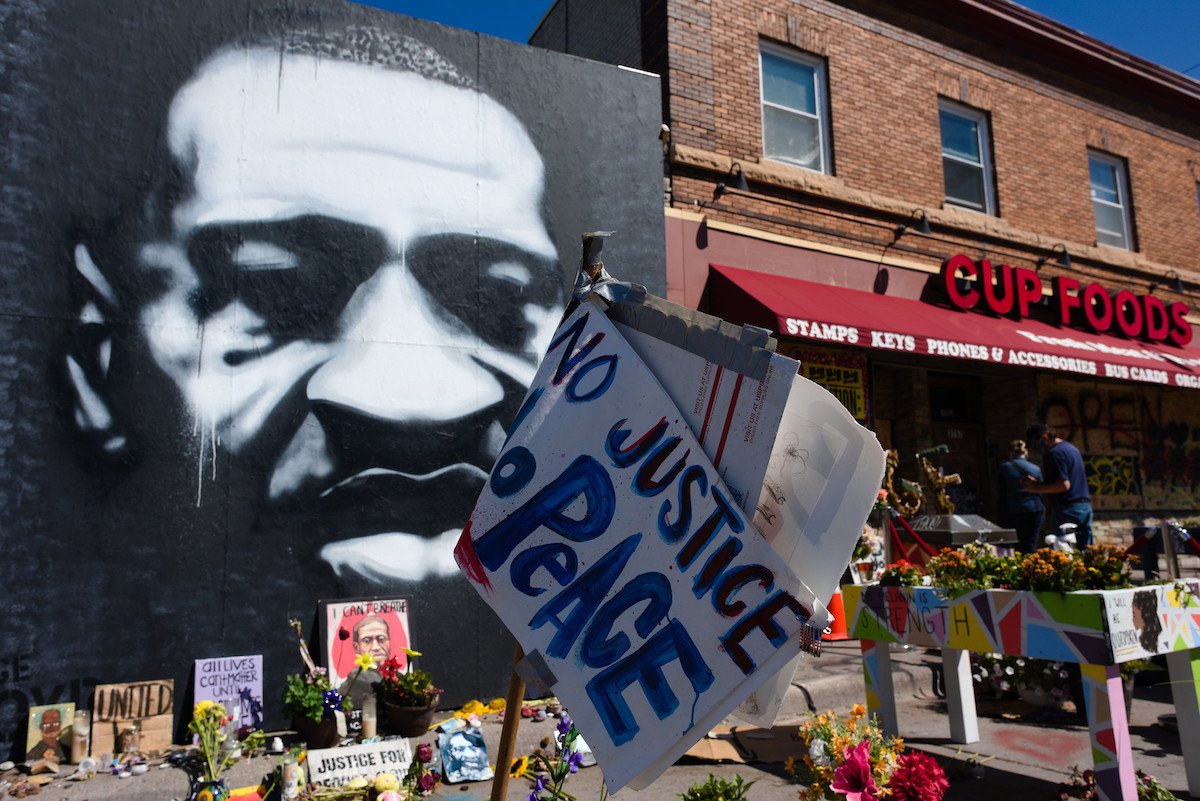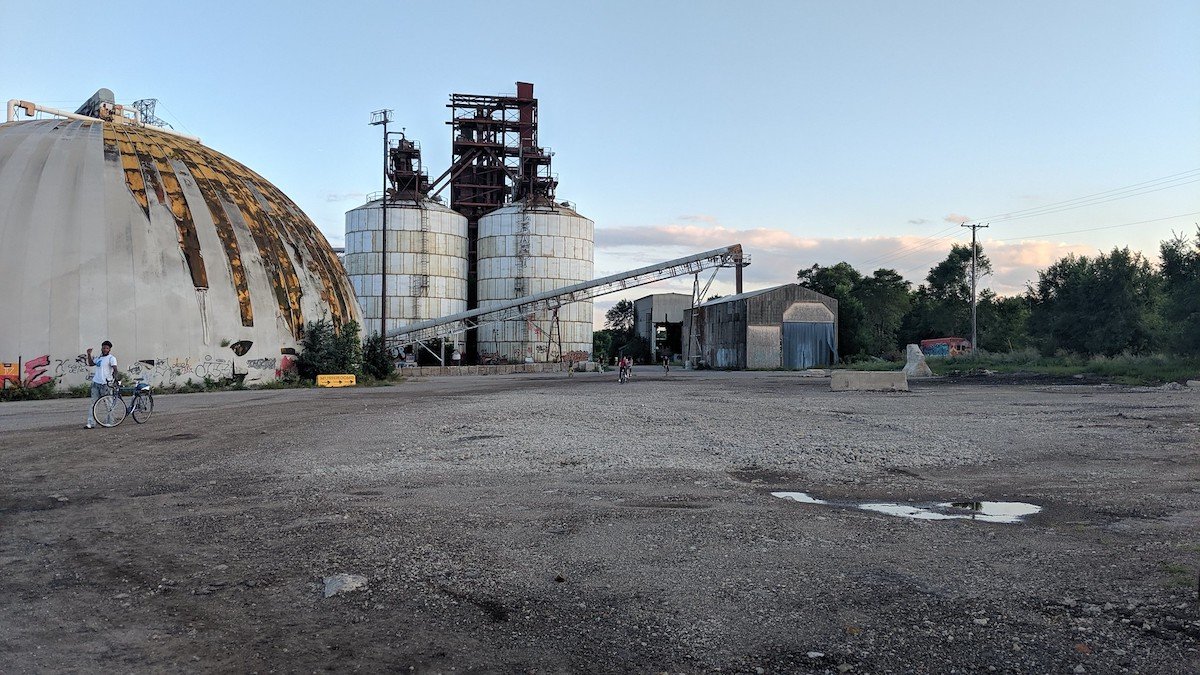Infrastructure in
America
Will Minneapolis’s Upper Harbor Terminal Project be Good for its Neighbors?
"There’s a myth that the land has already been sold,” said Erik Hansen, Director of Economic Development for the City of Minneapolis. “The land has not been sold.”
On the wall behind Hansen were maps of the land in question: forty-eight contiguous acres on the western bank of the Mississippi River, known as the Upper Harbor Terminal (or UHT). Located in the McKinley neighborhood of North Minneapolis, it is perhaps the most coveted stretch of soil within city limits. It’s also the site of the city’s biggest redevelopment project in a decade. I’d come to the luxurious riverfront offices of the Department of Community Planning and Economic Development to talk with Hansen about the project and the criticism it’s received.
Here’s the gist: In 2015, Minneapolis shut down an unsightly barge shipping port at the UHT over worries of invasive Asian carp. In its place, the city plans to put a complex with apartments, office space, retail and restaurant space, a park, a hotel, and the project’s crown jewel: an outdoor amphitheater with room for between seven and ten thousand people. The land is publicly owned, so the city has more latitude than it would with typical private developer-led projects.
In 2017, the city entered into an exclusive rights agreement with a development team that brings together two Minneapolis fixtures: United Properties, a real estate firm owned by the Pohlads—the second-richest family in the state of Minnesota, and owners of the Minnesota Twins baseball team—will develop the land. The music venue will be owned and operated by First Avenue –– the beloved downtown nightclub and setting for Prince’s film Purple Rain. (Dayna Frank, the CEO of First Avenue, has floated the idea that the venue could be named after Prince, to honor the side of town where he grew up.)
Critics have pointed out that this arrangement will turn over one of the last vestiges of city commons, located in a historically Black area of the city, to white-owned private companies, and argued the project won’t truly serve the needs of the community. In a recent op-ed for the Star Tribune, architect Paul Bauknight and Reverend Dr. Robin Bell of Redeemer Lutheran Church, both of North Minneapolis, urged City officials to halt the project. “[The Upper Harbor Terminal project] can either continue the practice of real estate development as an extractive wealth process [in Black communities],” they wrote. “Or it can become a model for community wealth-building and ownership.”
But city officials have presented the Upper Harbor Terminal as the opposite: according to them, it’s a project explicitly designed to repair the legacy of racism in Minneapolis. Hansen told the north side-based Insight News that “this is a racial equity project.” Meanwhile, Minneapolis Mayor Jacob Frey and Ward 4 councilmember Phillipe Cunningham have lobbied for $20 million in bonding money from the state to help finance the construction––what amounts to a public subsidy to aid these private developers.
Ultimately, the question at the heart of the UHT conflict is this: what does equitable urban development look like? In the midst of a pandemic that has hit Black Minnesotans disproportionately hard (Black people make up six percent of Minnesota’s total population and nineteen percent of total positive cases); an accompanying economic depression, during which half of Black workers in Minnesota have applied for unemployment benefits; and a nationwide movement for Black lives catalyzed by the police killing of George Floyd right here in Minneapolis, that question has become even more urgent.
Minneapolis as we know it exists because of the Mississippi River. Lumber, flour milling, commodity shipping—the river has been the generator of growth since Europeans took the land from the Dakota nation. If you live in Minneapolis, your quality of life can be discerned by your proximity and accessibility to the city’s waterways. The lakeside neighborhoods of South Minneapolis and the river roads of the southern half of the Mississippi are the wealthiest, whitest parts of the city. If you spent all your time there, you might think Minneapolis is among the best places to live in the United States. The city website has a long page of accolades, listing awards ranging from Best U.S. Cities for Young Professionals (Second place), to Most Bike-Friendly (Second place), to top spots on lists of Safest, Happiest, and Fittest cities/states in the country.
But Minneapolis also holds a much less laudable title: the city has one of the widest quality of life disparities for Black people in the country. In 2018 the median Black family income in Minneapolis was $36,000 per year, while the median white family income was $83,000 per year. That gap is second only to Milwaukee, Wisconsin among American cities. This inequality extends to homeownership, education, incarceration, and policing. Black residents of Minneapolis, by and large, do not share in the same wealth and opportunity as their white counterparts. And this disparity holds true for the state as a whole. Dr. Samuel Myers, an economist at the University of Minnesota-Twin Cities, calls it the “Minnesota Paradox.”
Land use along the Mississippi River is a case study in Myers’s “paradox.” Whereas the southern riverbanks have recreation, amenities, and green space, the northern riverbanks have been home to toxic industrial sites like Northern Metals Recycling, the GAF Shingles factory, and, until 2015, the Upper Harbor Terminal, which had been in operation since the 1960s. “You look at where the neighborhoods are in North Minneapolis, and then you look at where the river is—in between them is a huge freeway, and then a string of industrial uses, and then the river, which has much less parkland,” said Colleen Toberman, River Corridor Director for the Friends of the Mississippi River. “Lower income folks and Black folks were directed to settle near those industrial areas, which were dirtier, less appealing to live by, and more polluting. It’s a part of the city where people have been separated from their waterfront.”
 The North Minneapolis riverfront near Lowry Avenue includes several industrial buildings on the Mississippi River. (Tony Webster, creative commons)
The North Minneapolis riverfront near Lowry Avenue includes several industrial buildings on the Mississippi River. (Tony Webster, creative commons)
These racial disparities, including historical separation from the river, were created and reproduced through government policies like redlining, racially restrictive covenants, and yes, urban redevelopment plans like the construction of Interstate 94. This legacy is why everyone who talks about the Upper Harbor Terminal, from its most enthusiastic boosters to its fiercest critics, talks about it as an opportunity to create a new vision of Minneapolis. “Forty-eight acres doesn’t come along the river often,” said Bauknight, the architect. “When we have a project of this scale, we have a big opportunity to talk about education, training, job creation and wealth building. But you have to really drill down and ask: what does that really mean? What really prevents us from having those things?”
As one of the project’s most public detractors, Bauknight argues that, unless the city fundamentally changes its approach from what he views as the current developer-driven paradigm, the UHT will reinforce existing patterns of inequality. “Throughout my career, I would hear that these projects were going to bring these big social and economic impacts. Then you look at North Minneapolis, and we continue to have these disparities. These projects don’t change that,” he said. “We live in a city that everyone wants to believe is really progressive. No one in local government would say that North Minneapolis hasn’t been intentionally disinvested from. But in order to change that, you have to operate differently, or you’re not going to get different results.”
In the summer of 2018, residents and activists, citing a perceived lack of transparency and community engagement on the part of the city, as well as the potential for gentrification and environmental harm resulting from the project, came together under the banner of the Northside Eco-Harbor Co-Creation Team. One of its founding members is Catherine Fleming, a long-time North Minneapolis resident. “There’s people in North Minneapolis who don’t know where their next meal is coming from, and the city is saying, ‘here’s some live music for you,’” Fleming said. “Where is the benefit? ‘This will bring people to North Minneapolis, they say’…If you get a better answer than that,” she told me, “please share it.”
A primary concern, Fleming said, was the potential for displacement. Since 2015, the median home price in the majority-Black McKinley neighborhood, which encompasses the UHT site, has undergone an 88.5 percent increase, among the largest of any neighborhood in the city. At the beginning of 2017—the same year United Properties was granted exclusive rights to develop the UHT—the real estate website Zillow listed McKinley and the adjacent Folwell neighborhood as its top two “hot housing markets” in the Twin Cities.
Meanwhile, a few miles south, the North Loop, a former industrial zone in Ward 3 that was once better known as the Warehouse District, has been thoroughly gentrified—thanks in part to Jacob Frey, who represented the ward on city council before he was mayor. And that development could conceivably spread toward North Minneapolis, especially if a state-of-the-art concert venue moves in.
When a local reporter, Tom Lyden, asked Frey whether the UHT project would accelerate gentrification, Frey admitted that at least some displacement is inevitable. But “this is not a scenario where we let the northside continue to get the short end of the stick,” he said. “They’re deserving of funding. They’re deserving of something exceptional, of excellence. And yes, we can also help to prevent some of those displacements.”
Fleming helped organize a canvassing effort in the neighborhood, raising awareness of the potential for residents’ displacement. She went door to door talking to people who could see the development site from their yards. The city had organized at least two door knocking sessions in McKinley as part of their community engagement plan, but, Fleming said, “[The people] had no idea what we were talking about. The questions the city asked them were, ‘do you like live music?’ Well, yeah, but they didn’t mention, ‘you may have to leave the neighborhood.’”
Community members are also concerned that the arrival of a multi-million-dollar redevelopment project would bring more police to the area. “When there is the opportunity for redevelopment, we see policing increase. There is a direct-line connection between land, profit, and policing going all the way back to slavery. We’re a country built on land and property rights. It’s all tied together,” Bauknight said.
The connection between urban redevelopment and increased policing is supported by a growing body of academic scholarship. A study by Brenden Beck, a professor at the University of Colorado-Denver, found that from 2009-2015, in New York City, rising property values led to more “intensified misdemeanor policing”—or the types of needless stops and arrests the Minneapolis City Council has said it wants to curb. Additionally, Beck found, the new businesses that move in, and the new middle-class, more often white residents are more likely to call the police on “non-emergency disorder crimes.”
It’s worth asking, then, whether the UHT project, as it currently stands, is actually in the best interest of the community. Given the dramatic racial inequalities already facing Minneapolis, and the deeply strained relationships between the Black population and the police department, a project that could price out community members and increase police contact seems more likely to exacerbate existing problems than to remedy them. Is this what equitable development looks like?
The Northside Eco-Harbor Co-Creation Team doesn’t think so. Its members mobilized with other activists and community members to delay the city council vote on UHT multiple times. When the concept plan passed last March, this pressure was reflected when Cunningham and fellow North Minneapolis councilmember Jeremiah Ellison included new amendments that would keep the concept plan in place but consider holding the land in a public trust and signing a community benefits agreement.
That’s where the conversation I had with Hansen—over whether the land had already been sold to developers—comes into play. The final plan is still waiting for city council approval in November, and the city has not officially sold the land to United Properties. In a Minnesota Public Radio story from March, both Hansen and Cunningham said they’re “recommending” that the city own forty-three of the forty-eight acres. The final five acres and main commercial attraction would still be the First Avenue-owned music venue.
It’s a concession to community members who have called to keep public land public. But opponents remain skeptical. “The devil is in the details,” Fleming said. “Many plans have been thrown out there, but the key area is enforcement. Who or what entity will ensure that the city and the developers do what they’re supposed to do? It is critical that the community becomes savvy about how the City operates. They are slippery and they are experienced in deluding us,” she said.
 Aerial view of the Upper Harbor Terminal property (Tom Reiter for Friends of the Mississippi River)
Aerial view of the Upper Harbor Terminal property (Tom Reiter for Friends of the Mississippi River)
In early 2019, the city council appointed a Collaborative Planning Committee to give the community a seat at the table. This collaboration has not gone smoothly. Last November, Bauknight and another member of the committee, Tessa Antilla, resigned, writing that “the transfer of [UHT] from public to private hands is a long-term economic benefit for largely white companies and individuals outside of North Minneapolis.” Then, in January, the committee violated the state’s Open Meeting Law, telling several reporters they could not record or take photographs in a meeting and increasing concerns about transparency.
Bauknight has lived in North Minneapolis since the late 1980s and designed prominent buildings there, like the Urban League and Lucy Laney school. He’s also the founder of the Urban Design Lab, the largest Black-owned architecture firm in Minnesota. “For me it’s always been about how the social, economic, and cultural come together with the built environment,” Bauknight said. “As my career progressed, I’ve gone much deeper into how we account for historical, systemic racism, and how we create truly democratic processes that allow people who have been disenfranchised to benefit.”
In Bauknight’s view, a community development project that aimed to repair historic wrongdoing would start with a more thoroughly democratic community engagement process, then pursue ambitious community ownership models that could make a dent in those longstanding inequalities. “If it’s privately held, you have to make decisions based on what’s best for the bottom line. At the end of the day, the money is leaving the community, period and end of story. That’s a huge issue to me,” he explained. “We’re not building any wealth in North Minneapolis by selling the property to a major real estate developer.”
Bauknight applied and was selected to join the Collaborative Planning Committee. But by last fall he had seen enough. “It was clear that it wasn’t collaborative,” he said. The city had its mind made up, he said, and the committee was there to tell them “what color the bricks should be.” Later, he put it like this in an email: “What I have been espousing is direct ownership of the land and facilities through fractional ownership strategies where residents own shares of the project and receive dividends. The public land option at UHT does not address that reality.”
Hansen told me earlier this year that he, Cunningham, and representatives from United Properties are considering shared ownership models. “What [United Properties has] been indicating is that they’ve been working on a model where they don’t own this property when it’s done, and they’re going to have it owned by the community,” Hansen said. “People are not going to trust us until there is a delivery of the deed to an organization that is not owned by United Properties, and then they’ll believe it. Maybe.”
That lack of trust in the city is both a reflection of a community historically disempowered from the political process, and a response from those who have observed how recent development processes have played out in other parts of Minneapolis.
Jake Virden became interested in the Upper Harbor Terminal project through his work as a community organizer with Hope Community in South Minneapolis. In 2019, he started a podcast called Money, Power, Land, Solidarity. With producers Isaac Specktor and Diana Siegel-Garcia, Virden uses the Upper Harbor Terminal development as a lens into city politics through interviews with key stakeholders and his own blend of memoir and analysis. “The Upper Harbor is a way to really understand the dominant politics in Minneapolis,” he said. “What is the status quo here? Who is in power and what is their ideology? How are they executing their plans? Who do they serve? You can see it all right here.”
Virden grew up in the neighborhoods of Northeast Minneapolis and used to hang out across the Mississippi River from the UHT site. Northeast used to be a primarily working-class area of Polish and Ukrainian immigrants, but, according to a report from the University of Minnesota, it has experienced significant gentrification over the years, with long-time residents priced out of their homes and James Beard award-winning restaurants moving in. Virden noticed that nobody he grew up with was consulted about how their neighborhoods would be transformed. A big reason why the UHT resonates so much is that he doesn’t want that same process to play out on the other side of the river.
Gentrification has been a buzzword for at least a decade now, and has become so loaded with cultural connotations that the political economy behind the process can be obscured. We know gentrification, in other words, when we see it: poorer and less-white neighborhoods see an influx of high-rise apartments and new residents without an organic connection to or respect for the community. Mom and pop restaurants and shops are replaced. Police are called more often. The rent, and the price of a sandwich or cup of coffee, become too damn high, pricing out longtime residents.
But these are the symptoms, not the cause. To hear some people talk about gentrification, you might think it’s an inevitable fact of life, like the leaves turning in October. “We talk about gentrification at the interpersonal level because that’s how we see it in our daily lives,” wrote the journalist P.E. Moskowitz in their 2017 book How To Kill A City: Gentrification, Inequality and the Fight for the Neighborhood. “But in every gentrifying city there are always events, usually hidden from public view, that precede these street level changes.”
According to Moskowitz, gentrification is a replicable process that one can trace “to a combination of federal, local, and state policies that favor the creation of wealth over the creation of community. Usually those policies come in the form of deregulation and privatization of urban services: transportation, education and especially housing.” A city government deciding to fork over its most valuable piece of public land to a private developer––as is the case with the Upper Harbor Terminal––seems to fit the description.
 A mural and memorial for George Floyd, 38th and Chicago Avenue, Minneapolis, August 17 (Fibonacci Blue, creative commons)
A mural and memorial for George Floyd, 38th and Chicago Avenue, Minneapolis, August 17 (Fibonacci Blue, creative commons)
The Rev. Dr. Robin Bell—who, with Bauknight, co-authored the op-ed against the UHT—told me that if we don’t factor in the property relations that undergird systemic racism, Black people will continue to be treated as expendable in urban redevelopment projects. Homeownership is the foundation of middle-class wealth-building in the United States, and the gap between white and Black families in Minneapolis is more than fifty percentage points. “If you don’t own your property, you can’t continue to afford the rate increase every year, and you’ll get displaced. That is white supremacy,” Bell said. “The end result of it is extermination. When am I being wiped out? We have to take a stand on this.”
On July 13, Bell was one of seven Black faith leaders from North Minneapolis who signed a letter urging city leaders to reconsider the Upper Harbor Terminal project in the wake of the historical moment. “The murder of George Floyd has shone a spotlight on the embedded racism in our community and the calls for drastic changes to our police force are more than warranted,” they wrote. “However, if we do not attack the foundational issue which is racism in all of the systems that govern our everyday lives, we will never achieve equality for all people.”
In fact, there’s an even more explicit connection between urban development and the police killing of George Floyd. Derek Chauvin killed Floyd at 38th Street and Chicago Avenue. Just two years earlier, that intersection was chosen by the Center for Urban and Regional Affairs at the University of Minnesota as the centerpiece for its study of gentrification in South Minneapolis.
In a 1963 interview, James Baldwin, speaking on that decade’s trend of urban renewal, said that, as far has he was concerned, urban renewal “means negro removal.” Baldwin was speaking in a moment of national uprising, when people were taking to the streets to protest violence, segregation, disinvestment, and system racism in all its forms, including the processes that would later be known as gentrification. And he was attentive to how racism, poverty, and policing were inextricably linked.
Baldwin’s words offer insight into the contemporary moment. Keeanga Yamahtta-Taylor, a Princeton historian and contributor to The New Yorker, has pointed out that urban uprisings, from the 1960s to now, are generally touched off by police violence, but they are ultimately a response to the social arrangement in which the only investment Black communities receive comes in the form of violent police presence, while basic material needs like employment, healthcare, food, water and especially housing go unmet. “Urban uprisings are catalyzed by substandard housing,” Yamahtta-Taylor said in a recent interview.
In other words, equitable development requires addressing the underlying conditions that produce and enforce processes like gentrification, including economic inequality, disinvestment, racist land-use and housing policy, and policing. To do this, Minneapolis will have to, as Bauknight put it, “operate differently.” It will have to design an approach to development that is organized around people, not capital.
In their joint op-ed, Bell and Bauknight wrote that revamping Upper Harbor Terminal is mostly a question of political will. “If we can talk about changing the whole police structure––and I don’t disagree that policing needs to be drastically reformed––we certainly can change how we develop land and how it benefits communities that have not benefited from development, particularly when public dollars are put into it,” Bauknight explained in an interview this August.
After the urban uprisings of the late 1960s, the Johnson administration set up The Kerner Commission to study and investigate the roots of national discontent and, importantly, how to prevent them from happening again. The commission concluded that it would take nothing more than “a compassionate, massive and sustained” action, including investment in Black America. That investment has yet to come. And watching the buildings of Minneapolis burn earlier this summer, I remembered something Bauknight had said six months earlier:
“Community development has historically been about building buildings, rather than building people,” he told me. “We have systems in place that are designed to deliver buildings, and really are not good at building people. Everyone loves a groundbreaking and ribbon cutting. But the human dimension of this can be so much greater.”

The Upper Harbor Terminal property in Minneapolis (Friends of the Mississippi River)

The North Minneapolis riverfront near Lowry Avenue includes several industrial buildings on the Mississippi River. (Tony Webster, creative commons)

Aerial view of the Upper Harbor Terminal property (Tom Reiter for Friends of the Mississippi River)

A mural and memorial for George Floyd, 38th and Chicago Avenue, Minneapolis, August 17 (Fibonacci Blue, creative commons)